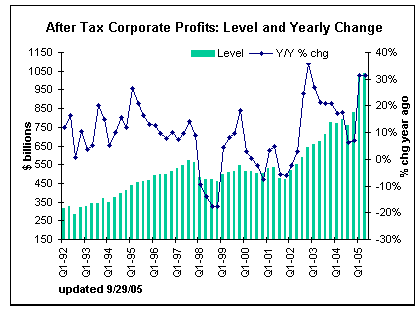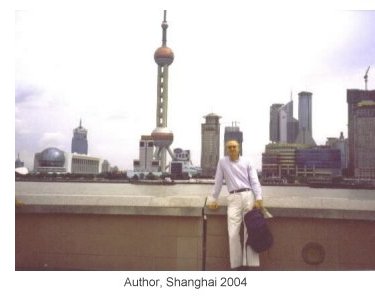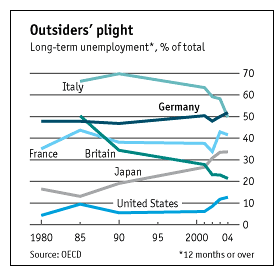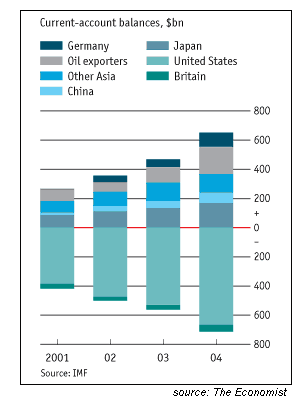

|
| weblog/wEssays | home | |
|
Trade with China: Making Out Like a Bandit (March 30, 2006)  The protectionist hysteria gaining mindshare in Congress may be good politics
to some, but it overlooks one simple fact about U.S.-China trade:
the U.S. is making out like a bandit.
The protectionist hysteria gaining mindshare in Congress may be good politics
to some, but it overlooks one simple fact about U.S.-China trade:
the U.S. is making out like a bandit.
What supports this shocking statement? Everything. If anyone has cause to get sore, it's the Chinese, and here's why.  Just how profitable are U.S. companies having their products made in China? Let's take
some examples. Apple has been doing very well with it's Chinese-manufactured iPod,
raking in $16 billion in sales and $1.6 billion in profit. Their 10% net isn't that impressive,
but look at the sales and profit growth numbers: sales increased 66%, but net profit grew
318%. The stock returns are even more spectacular--up 812% in the past three years.
Just how profitable are U.S. companies having their products made in China? Let's take
some examples. Apple has been doing very well with it's Chinese-manufactured iPod,
raking in $16 billion in sales and $1.6 billion in profit. Their 10% net isn't that impressive,
but look at the sales and profit growth numbers: sales increased 66%, but net profit grew
318%. The stock returns are even more spectacular--up 812% in the past three years.
Apple looks rather tame compared to Motorola, another global supplier of technology with huge operations in China, which pulled in $4.6 billion on sales of $36 billion, a net margin of almost 13%. Intel, which also manufactures products in a number of countries, including China, made a staggering $8.7 billion from $39 billion in sales, a very healthy 22% net profit. (Microsoft, which manufactures nothing material, made $13 billion from $41 billion in sales.) So who's making all the profits in this trade? The U.S. companies. This was carefully documented in an August 2005 article in Foreign Affairs entitled A Trade War with China?. The author demolishes all the hearsay arguments about how trade with China is detrimental to the U.S. economy, revealing that much of China's manufacturing is owned and managed by foreign corporations. In effect, the companies aren't Chinese at all; only the workers are Chinese. 
These days manufacturers in China seem unable to pass on the higher costs. Wage inflation is "eating into margins. There is very little pricing power in China -- or globally, anywhere -- anymore," says Michael Barbalas, general manager at the Suzhou factory of Andrew Corp., a Westchester,Illinois maker of wireless networking gear. "You can't negotiate with Wal-Mart , and if you're selling to the large electronics firms, you don't have a lot of pricing power, either." For people bemoaning the loss of manufacturing jobs in the U.S., here's a suggestion: get real. Companies go where they have to in order to survive and prosper in a world where foreign corporations will gladly take sales away from them. If they don't compete on quality and price, they wither. For a better understanding of the realities of the global marketplace, read this Foreign Affairs article, Offshoring: The Next Industrial Revolution?  Many U.S. companies still have huge American manufacturing workforces--Catepillar and Boeing
come to mind, both global leaders which generate big profits--but they also manufacture
components in other nations as well, for a number of compelling reasons which may have little or
nothing to do with low-cost labor. Boeing, for instance,
essentially guarantees sales in Japan by subcontracting out the wing assemblies to high-tech
Japanese manufacturers. No parts made in Japan, no sales in Japan, and so fewer planes made
in Seattle. Pink slips fly, both in Japan and America--not good for anyone.
Many U.S. companies still have huge American manufacturing workforces--Catepillar and Boeing
come to mind, both global leaders which generate big profits--but they also manufacture
components in other nations as well, for a number of compelling reasons which may have little or
nothing to do with low-cost labor. Boeing, for instance,
essentially guarantees sales in Japan by subcontracting out the wing assemblies to high-tech
Japanese manufacturers. No parts made in Japan, no sales in Japan, and so fewer planes made
in Seattle. Pink slips fly, both in Japan and America--not good for anyone.
If you compare the rates of "hard core" long-term unemployment in the industrialized nations (see chart), then you'll see that the U.S. workforce has a far smaller problem than the European nations, which are staggering beneath a long-term unemployment rate of 40% - 50%. 
The U.S., on the other hand, exported $819 billion and imported an astonishing $1,526 billion in 2004--and the imbalance only grew larger in 2005. For more statistics, visit the U.S. government site of the Bureau of Economic Analysis So exactly what are the Chinese gaining from this supposedly favorable trade? How about massive environmental damage and the resulting health costs, a potentially devastating asset bubble, a trillion dollars in risky dollar-denominated bonds, and a bunch of foreign-owned factories which will move to the lower-cost competition once wages rise in China. Meanwhile, what has the U.S. gained? Enormous, unprecedented corporate profits, offshored environmental waste, cheap goods, and the off-loading of huge debt. So who's making out like a bandit? The U.S., not China. At least one keen observer, Stephen Roach of Morgan Stanley, sees the Chinese government as moving away from this entire model of growth at any price. I found this link to Roach's recent report from China on the always thought-provoking and well-researched Mish's Global Economic Trend Analysis blog: The Coming Rebalancing of the Chinese Economy. His commentary suggests that the Chinese are already beating a path away from their unhealthy dependency on the U.S. consumer by growing their own consumer spending. If trade with China becomes less imbalanced, perhaps the benefits of the trade will also become more balanced. It's about time. copyright © 2006 Charles Hugh Smith. All rights reserved in all media. I would be honored if you linked this wEssay to your site, or printed a copy for your own use. |
||
| weblog/wEssays | home |